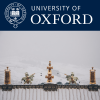The Successive Avatars of the Heart Essence of the Ḍākinī: Termas as Continuous Revelation (Oxford Treasure Seminar Series)
Research into the main rDzogs chen cycle of the Northern Treasures, the dGongs pa zang thal (c. 1366), easily shows that a large part of it is a rewritten version of the mKha' 'gro snying thig. A prophecy in the dGongs pa zang thal even presents it as such. This talk will summarize the results of the FCHNT's research into the gradual revelation of the mKha' 'gro snying thig: after its initial discovery in 1313, it appears to have been rewritten and expanded several times, a problem that is intertwined with that of the only gradual decipherment of the brda yig, which for the mKha' 'gro snying thig does not appear to have been fully completed until 1331, and possibly not even until Klong chen pa finalized the text, perhaps as late as the 1340s. There is also evidence of an ongoing process of "translating" the brda yig for the Northern Treasures literature, which continued until late in the life of Rig 'dzin rGod ldem.
This presentation will sketch a research project whose axis would be to consider what Tibetan tradition presents as distinct terma cycles as successive versions of one and the same text, exploring this heuristic hypothesis on a first corpus: the entire Padma snying thig category within the Rin chen gter mdzod. To what extent can the termas of Rin chen gling pa, rDo rje gling pa, Padma gling pa, and others, including bsTan gnyis gling pa's additions to rGod ldem's Lung phag mo zab rgya, be considered variations of one and the same text? Can we establish a typology to divide the rDzogs chen corpus (etc.) into groups of cycles, which would then be successive layers in the ongoing process of rewriting a single corpus over decades and sometimes centuries, in a continuous work involving many individuals?
The key idea is that Cantwell's (2020) findings from the liturgical works of the Düdjom Vajrakīlaya traditions might seem to apply to terma literature as a whole, if properly divided into typological categories.




